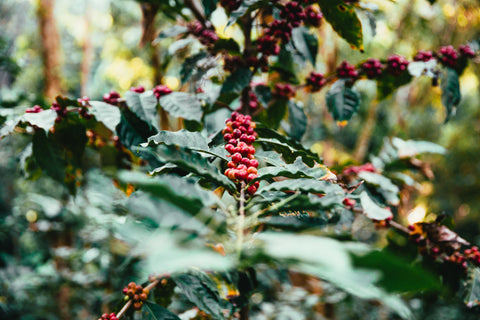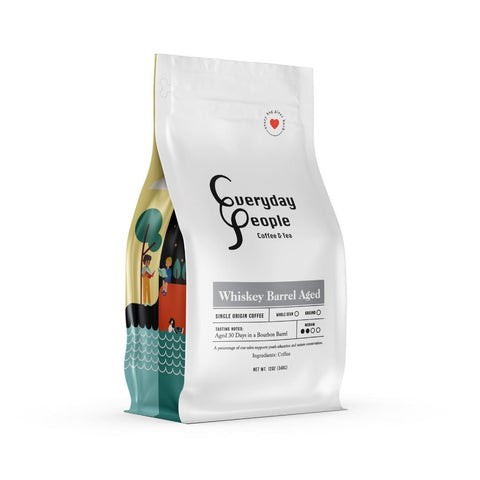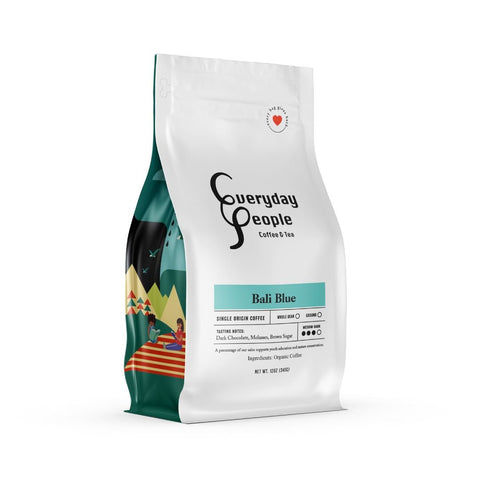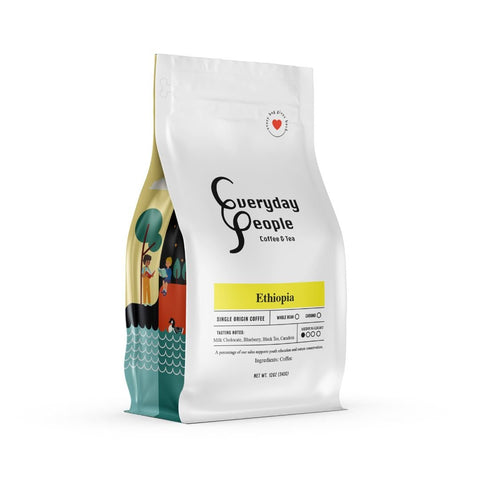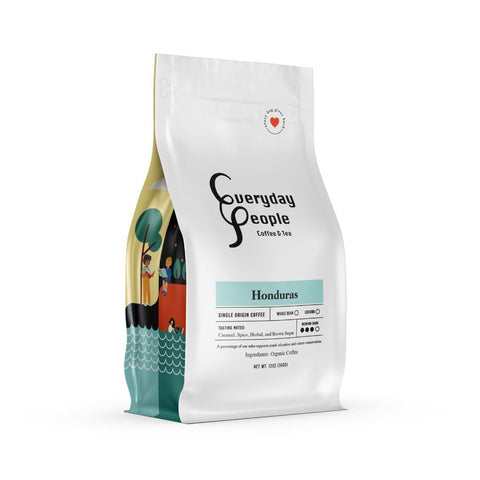The Global Coffee Crisis Explained
(Updated July 2025)
Why is it so important to choose sustainably-sourced, high-quality coffee in 2025? Why drink coffee that we know where it comes from and how it has been grown? Why buy coffee that is labeled with certifications like Fair Trade or organic?
Climate change continues to transform coffee-growing regions with unprecedented intensity. As global temperatures rise, coffee farmers face increasingly unpredictable and unreliable conditions that disrupt the seasonal life cycle of coffee plants. The Intergovernmental Panel on Climate Change (IPCC) reports indicate that climate change will reduce worldwide coffee yields on average and decrease coffee-suitable land by 50% by 2050. As a crop that is particular about the environment it grows in, unless farmers are paid enough to invest in sustainable infrastructure, coffee faces potential extinction without deliberate conservation efforts. Coffee diversity is also set to decrease as underpaid farmers leave their farms to migrate toward better opportunities. Farmers are dealing with cultivating coffee in both a climate crisis and a price crisis, and coffee consumers have a part in mitigating the worst effects of these crises through choosing to drink coffee that has been sourced responsibly and sustainably.
What is the Global Coffee Crisis in 2025?
The coffee crisis encompasses both climate and economic challenges that are fundamentally reshaping the global coffee industry. In 2024, coffee prices soared to their highest levels in 50 years, reaching over $3.36 per pound. By July 2025, coffee prices hit 299.60 USD/lbs, representing a 29.94% increase from the previous year. The combination of reduced yields from climate-disrupted growing seasons and volatile pricing continues to devastate coffee farmer livelihoods worldwide, forcing many to abandon their coffee farms.
Climate Change Impact on Coffee Production
Since 2010, approximately 24 million people worldwide each year have been displaced by extreme weather events. Coffee production remains highly vulnerable to climate change effects, including rising temperatures and increasingly unpredictable extreme weather patterns. Rising temperatures, unpredictable rainfall, and increased pests and diseases are all conspiring to make coffee cultivation more challenging and less reliable for farmers globally.
These external factors continue to disrupt coffee's growing season and make formerly predictable weather patterns unreliable to depend on. Without proper financial support and infrastructure, farmers struggle to cultivate coffee during rapidly changing weather events that suddenly swing from drought to heavy rains at unpredictable times. With rising temperatures and extreme weather patterns, coffee plants become stressed and more susceptible to diseases like coffee rust and pests like the coffee berry borer. In Central America, disease and pests caused over $500 million in annual damages during the 2012-2013 growing season, and these losses have only intensified in recent years.
These external factors continue to disrupt coffee's growing season and make formerly predictable weather patterns unreliable. Without proper financial support and infrastructure, farmers struggle to cultivate coffee during rapidly changing weather events that suddenly swing from drought to heavy rains at unpredictable times. With rising temperatures and extreme weather patterns, coffee plants become stressed and more susceptible to diseases like coffee rust (Hemileia vastatrix) and pests like the coffee berry borer.
Recent research has documented the accelerating impacts of climate change on coffee production. Climate change is adversely affecting coffee production, impacting both yields and quality, with coffee production dominated by the cultivation of Arabica and Robusta species. The most vulnerable coffee-growing regions continue to experience production losses, with Central America remaining particularly affected by disease outbreaks and extreme weather events.
Coffee Rust Disease and Pest Problems

Climate change transforms once-thriving coffee plants into stressed, disease-susceptible crops.
Coffee rust (La Roya) remains one of the most destructive diseases affecting coffee plants worldwide. This fungal disease caused by Hemileia vastatrix primarily attacks Typica and Bourbon coffee varieties, causing significant production losses. Rising temperatures, increased humidity, and unpredictable rainfall patterns have intensified this disease's severity across major coffee-growing regions. With climate change continuing to create ideal conditions for the fungus, this disease caused over $250 million in production losses in Central America during peak outbreak years. During the 2012-2013 growing season, Honduras, Costa Rica, and Guatemala declared states of emergency as more than 350,000 people lost their jobs due to massive coffee crop losses.
Deforestation, climate change, and the increasing severity of diseases and pests continue to put 60% of all wild coffee species at risk for extinction, significantly higher than the average risk figure of 22% for all plants. Wild coffee species provide crucial genetic diversity needed to create more disease-resistant coffee plants, making their conservation essential for the industry's future resilience.
Current research indicates that while farming coffee will be more challenging in a warmer climate, with climate change projected to reduce suitable coffee-growing land by approximately 50% by 2050. However, Coffea robusta may be the better bet against climate change compared to Coffea arabica, which dominates global coffee production.
Deforestation, climate change, and the increasing severity of diseases and pests continue to put 60% of all wild coffee species at risk for extinction, significantly higher than the average risk figure of 22% for all plants. Wild coffee species provide crucial genetic diversity needed to create more disease-resistant coffee plants, making their conservation essential for the industry's future resilience.
Current research indicates that while farming coffee will be more challenging in a warmer climate, with climate change projected to reduce suitable coffee-growing land by approximately 50% by 2050. However, Coffea robusta may be the better bet against climate change compared to Coffea arabica, which dominates global coffee production.
Coffee Price Crisis and Market Volatility

Coffee prices have experienced extreme volatility, from historic lows of $0.86/lb in 2019 to over $299/lb in 2025.
Though coffee is valuable economically, the cyclical nature of the market continues to create struggles at the farm level in producing countries. The economic challenges facing coffee farmers have intensified dramatically since the coffee prices hit historic lows of $0.86 per pound in 2019. This price was not feasible to even cover the cost of producing coffee. Even today, approximately 61% of producers globally still sell their coffee for under the cost of production.
Recent production forecasts show Brazil's arabica production declining 12% to 39.9 million bags in 2025, while robusta production increased 24% to 23.3 million bags due to adverse weather conditions. These production shifts create ongoing market volatility and supply concerns affecting global coffee prices.
Coffee trading prices remain determined by the Coffee "C" Futures Market, based on contracts for 17,000 kg (37,500 lbs) of green coffee. This system continues to disadvantage the 25 million smallholder farmers who comprise 70% of all coffee farmers globally. Only larger companies find price stability in this market, yet the "C" price affects most coffee trading contracts.
The most recent price volatility has been caused mostly by oversupply of coffee from Brazil and the lack of supply management through export quotas and price constraints in the Futures Market. Global production has been increasingly concentrated in Brazil and Vietnam, where technological innovations have mechanized the coffee cultivation process, increasing yields for the commodity market. These yields have created periods of oversupply of exported coffee, thus sharp declines in the C price, followed by supply shortages that drive prices to historic highs.
Coffee trading prices remain determined by the Coffee "C" Futures Market, based on contracts for 17,000 kg (37,500 lbs) of green coffee. This system continues to disadvantage the 25 million smallholder farmers who comprise 70% of all coffee farmers globally. Only larger companies find price stability in this market, yet the "C" price affects most coffee trading contracts.
The International Coffee Agreement Breakdown
Before 1989, the International Coffee Agreement (ICA) would have placed price constraints on the "C" price and would have compelled national coffee organizations in producing countries to take actions to control the amount of exported coffee. However, the ICA, with its protections for coffee producers, broke down in 1989, and there has been a lack of political will to reinstate the agreement with controls on supply, price, and other structural supports for farmers in producing countries.
Farmers in the pre-ICA era enjoyed macro-structural support through research and development programs, rural development initiatives, state subsidy programs, production quotas, and export control programs. In post-ICA, most of the financial value added to coffee occurs after roasting in the consuming country. Even though many farmers are not paid enough to cover the costs of coffee production, they are the ones that currently absorb much of the financial risk in the coffee supply chain.
Recent economic analysis shows that coffee farmers still receive approximately 2% or less of the price of a cup of coffee sold in coffee shops, and roughly 6% of the value of ground coffee sold in grocery stores. As documented in "The Roots of the Coffee Crisis" by Petchers and Harris:
"Today coffee farmers receive 2 percent or less of the price of a cup of coffee sold in a coffee bar. They receive roughly 6 percent of the value of a standard pack of ground coffee sold at a grocery store... In 1984, green bean costs constituted 64% of the US retail price. When prices crashed in 2001, the raw material price as a proportion of the final retail value had fallen to 18 percent. In 2004, growers received on average 17 percent of the final retail value of coffee--and as low as 9 percent for South American producers of robustas."
This dramatic disparity has persisted and, in many cases, worsened since the original crisis documentation in the early 2000s.
Many farmers continue to grow coffee as a cash crop while subsisting on garden crops and earning money through coffee sales. However, accessing premium specialty coffee markets requires knowledge and financial investment that many farmers cannot afford. After an anticipated doubling in 2024, prices are projected to ease by approximately 13 percent in 2025 and a further 2 percent in 2026 as additional supplies enter the market, though adverse weather remains a significant risk factor.
Coffee Industry Solutions and Sustainability Initiatives
There has been an increase in sustainability initiatives, the ethical consumer movement, and the rise of the specialty coffee sector, allowing for a portion of coffee to be produced outside of traditional commodity markets. A 2016 report commissioned by the Specialty Coffee Association (SCA), the Global Coffee Platform (GCP), and the Sustainable Coffee Challenge (SCC) stated that the coffee industry globally spent about $350 million on sustainability initiatives in coffee-producing regions in 2015, and this investment has continued to grow through 2025.
The global coffee industry has expanded sustainability initiatives and research efforts in response to these ongoing crises. Research organizations continue developing climate-resistant coffee varieties for farmers worldwide. Cenicafé in Colombia has developed multiple hybrid varieties since 1980, including the Castillo variety and Cenicafé 1 variety, as coffee rust continues to evolve and mutate. Coffee rust has mutated over time, so Cenicafé has had to develop new varieties since their first hybrid in 1980: a Colombian varietal, combining Caturra and a variety of Timor.
Sustainable Coffee Farming Practices
 Coffee farmers in Tanzania implement climate-resilient practices with support from organizations like coffee&climate.
Coffee farmers in Tanzania implement climate-resilient practices with support from organizations like coffee&climate.
Organizations like coffee&climate by the Hanns R. Neumann Stiftung Foundation continue sharing knowledge with farmers to build climate resilience through proven methods:
- Cover crops and strategic coffee plant spacing to lower soil temperature in less shaded areas
- Prevention of erosion through ground cover management
- Quick-growing shade trees and crop diversification strategies
- Interventions using trichoderma to promote plant growth and increase resistance to diseases
- Gypsum application to aid root growth and soil health
- Soil temperature and shade cover monitoring through shared technologies
Companies like Starbucks, through their Farmer Support Centers, continue supporting farmers by sharing research and best practices with coffee farming communities. Other organizations are also helping farmers get organized within their communities, as farmers need information on coffee market trends and global production patterns to plan their crops effectively.
Recent research has also focused on enhancing climate resilience through improved agricultural practices. Organizations like coffee&climate emphasize the importance of helping farmers organize within their communities. As Ruiz, the regional coordinator for coffee&climate, notes, farmers need support to create infrastructure for marketing, organizational, and financial management alongside access to market information and production trend data.
Companies like Starbucks continue supporting farmers through their Farmer Support Centers, sharing research and best practices with coffee farming communities.
Recent research has also focused on enhancing climate resilience through improved agricultural practices. Opportunities for enhancing the climate resilience of coffee production include improved crop, soil and water management techniques. Additionally, researchers at University College London found that growing a single kilogram of coffee can produce greenhouse gas emissions equivalent to 15.33 kg of carbon dioxide, indicating that changing how coffee is grown, transported and consumed could significantly reduce this footprint.
2025 Coffee Market Outlook and Future Predictions
Coffee market analysts and café owners predict potential $12 lattes as supply struggles keep pace with growing global demand, reflecting severe supply chain pressures. Recent estimates indicate that world coffee production reached 171.4 million bags (60kg each) in 2023-2024, representing a 6.9 million bag increase from the previous year, while global coffee consumption continues forecasting growth.
Climate change is reshaping the coffee industry with far-reaching consequences for both producers and consumers. The industry faces a complex challenge of increasing demand amid decreasing suitable growing conditions and persistent economic inequality throughout the supply chain. Additionally, researchers at University College London found that growing a single kilogram of coffee can produce greenhouse gas emissions equivalent to 15.33 kg of carbon dioxide, indicating that changing how coffee is grown, transported and consumed could significantly reduce this environmental footprint.
Supporting Sustainable Coffee: What Consumers Can Do
Coffee remains in crisis, requiring urgent attention from consumers, industry stakeholders, and policymakers worldwide. As responsible coffee consumers, we must prioritize understanding where our coffee originates and support sustainable sourcing practices. By choosing ethically-sourced coffee, consumers directly support farmers facing complex climate and economic challenges across the globe.
Businesses like Everyday People Coffee and Tea demonstrate industry leadership by sourcing sustainable, single-origin coffees directly from farmers while ensuring equitable wages that sustain livelihoods dependent on coffee trade. This approach represents the comprehensive action needed to help the coffee industry navigate interconnected climate and economic crises while preserving coffee for future generations. The path forward requires coordinated efforts including climate adaptation strategies, fair pricing mechanisms, technological innovation, and consumer awareness.
Scholarly References
- Bunn, C., et al. (2023). "A systematic review on the impacts of climate change on coffee agrosystems." PMC. Available at: https://pmc.ncbi.nlm.nih.gov/articles/PMC9824350/
- Climate Institute Australia. (2016). "A Brewing Storm: The Climate Change Risks to Coffee." Available at: http://www.climateinstitute.org.au/verve/_resources/TCI_A_Brewing_Storm_FINAL_WEB270916.pdf
- Hedgehog Climate Change. (2025). "Why the climate crisis affects the price of your cup of coffee." Available at: https://www.hhc.earth/knowledge-base/articles/why-the-climate-crisis-affects-the-price-of-your-cup-of-coffee
- Journal of Sustainable Business. (2020). "Climate change adaptation, coffee, and corporate social responsibility: challenges and opportunities." Available at: https://jcsr.springeropen.com/articles/10.1186/s40991-020-00048-0
- KAI Farm. (2025). "The 2024-2025 Coffee Market: High Prices and Uncertainty." Available at: https://kaifarm.uk/the-2024-2025-coffee-market-high-prices-and-uncertainty/
- Royal Botanic Gardens, Kew. (2019). "Kew scientists reveal that 60% of wild coffee species face extinction risk." Available at: https://www.kew.org/about-us/press-media/kew-scientists-reveal-that-60-of-wild-coffee
- Taylor & Francis Online. (2023). "Opportunities for enhancing the climate resilience of coffee production through improved crop, soil and water management." Available at: https://www.tandfonline.com/doi/full/10.1080/21683565.2023.2225438
- Trading Economics. (2025). "Coffee Price Data." Available at: https://tradingeconomics.com/commodity/coffee
- World Bank Group. (2025). "Cocoa and coffee prices rebound on renewed supply concerns." Available at: https://blogs.worldbank.org/en/opendata/cocoa-and-coffee-prices-rebound-on-renewed-supply-concerns
- University College London. (2025). Research on coffee carbon footprint cited in Euronews: https://www.euronews.com/green/2025/02/18/extreme-weather-is-making-coffee-cost-more-and-taste-worse-report-warns

